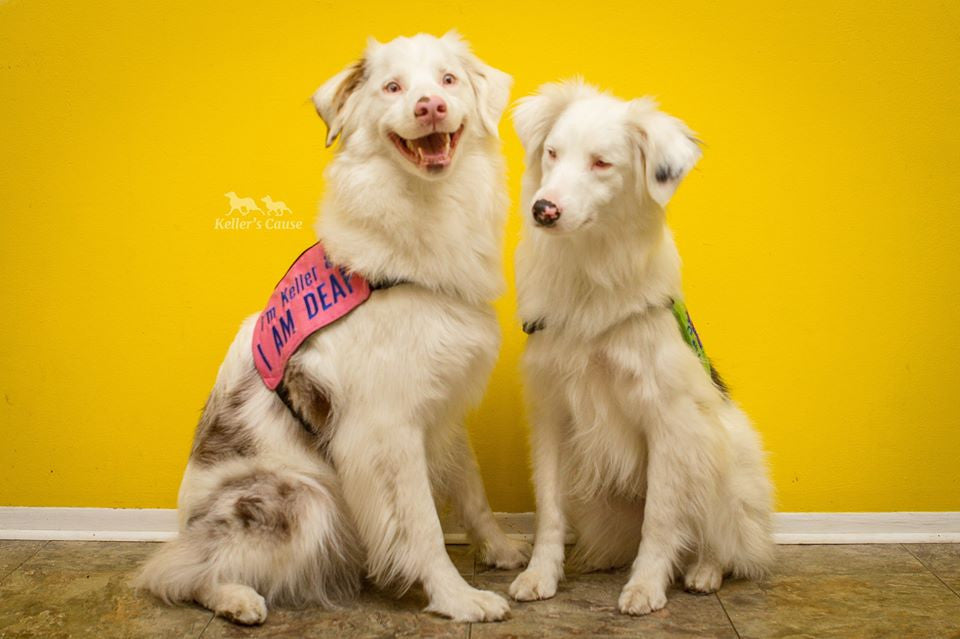 Amanda Fuller had no idea what “double merle” meant four years ago or that it was about to change her life forever. But in 2013, two women happened to know a breeder out of Lancaster, Pennsylvania, whose latest litter included a deaf and vision impaired puppy. Not likely to sell, the breeder planned to put the puppy down, but the two women intervened and posted the puppy as an adoption listing on Facebook. Amanda saw the ad, and by the time the puppy was 7 weeks old she had a new home in Baltimore, Maryland. Amanda named her Keller.
Amanda Fuller had no idea what “double merle” meant four years ago or that it was about to change her life forever. But in 2013, two women happened to know a breeder out of Lancaster, Pennsylvania, whose latest litter included a deaf and vision impaired puppy. Not likely to sell, the breeder planned to put the puppy down, but the two women intervened and posted the puppy as an adoption listing on Facebook. Amanda saw the ad, and by the time the puppy was 7 weeks old she had a new home in Baltimore, Maryland. Amanda named her Keller.
“I had never had a dog with any sort of disability so I had no idea what I was going to do,” says Amanda. But Keller had enough of her vision that after researching dogs with disabilities online, she started using sign language to experiment with teaching Keller basic obedience. Amanda quickly realized her all-white Australian shepherd was a lot smarter than she thought. At 4 months, Keller started doing agility work and trick training, and less than four years later Amanda is working toward their Expert Trick Title. “She just learned how to roll herself in a blanket,” Amanda laughs. “She knows how to play the piano, put a basketball in a hoop, ring a desk bell. We’re working on pushing a shopping cart next.”
But learning tricks is far from the most important work this dynamic duo have achieved. The reason the breeder was going to euthanize Keller is because she’s a “double merle” -- something most people haven’t ever heard of. So let’s get scientific for just a quick minute here: many dog breeds include a coat with a marbled pattern (and it’s AKC standard in several breeds) -- picture an Australian shepherd or border collie and you’ve got the right image -- that marble pattern is created by a “merle pattern gene mutation” during conception. The responsible way to breed for a marbled coat is to take one parent with a marbled coat and one parent with a solid coat. In doing so, each offspring will have a 50 percent chance of inheriting the merle pattern gene and a 50 percent chance of having a solid coat. If instead a breeder uses two parents with a marbled pattern, each offspring will have a 50 percent chance of inheriting the marbled coat, a 25 percent chance of having a solid coat, and a 25 percent chance of becoming a double merle, which often makes the puppies white, lacking pigmentation, and at a higher risk for disabilities, including hearing loss and eye defects. Many breeders that may be uninformed about safe breeding practices end up with double merles, and oftentimes these puppies are euthanized or dumped.
“We realized there are a lot of people in the world have dogs like Keller and have no idea how to train them,” says Amanda. She also stresses the amazing bond created with your dog through training and agility work, and that it’s no different with a deaf or blind dog than one without disabilities. Check out Keller’s Cause online to support the organization and help spread the word, and while you’re there enjoy a little work break by watching some of the training videos -- then share widely!

